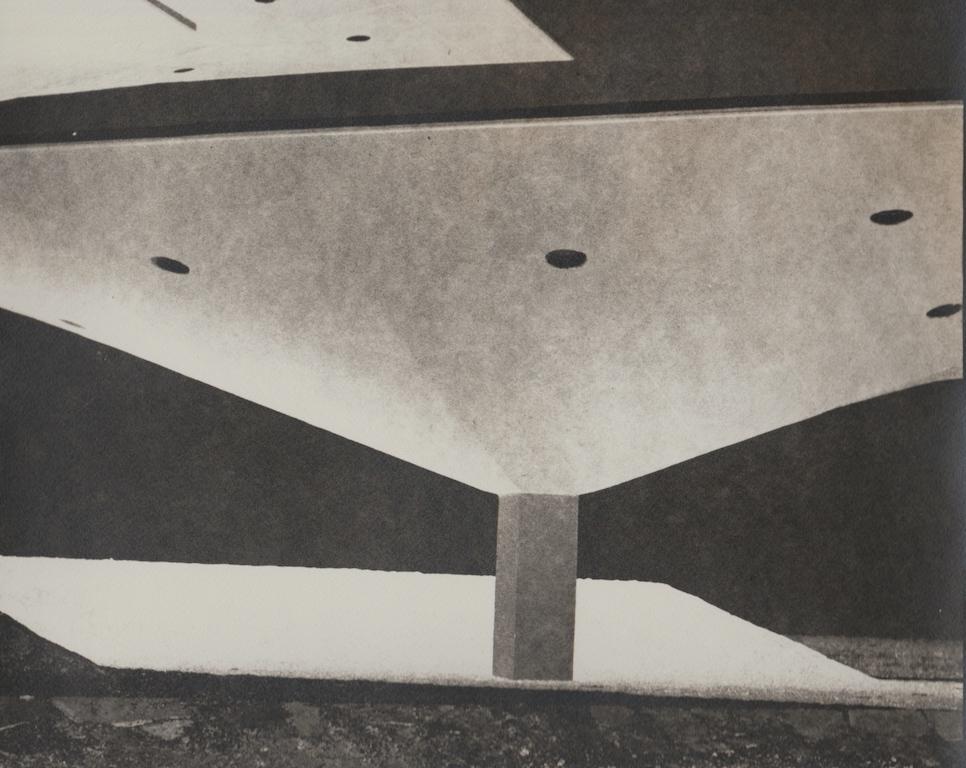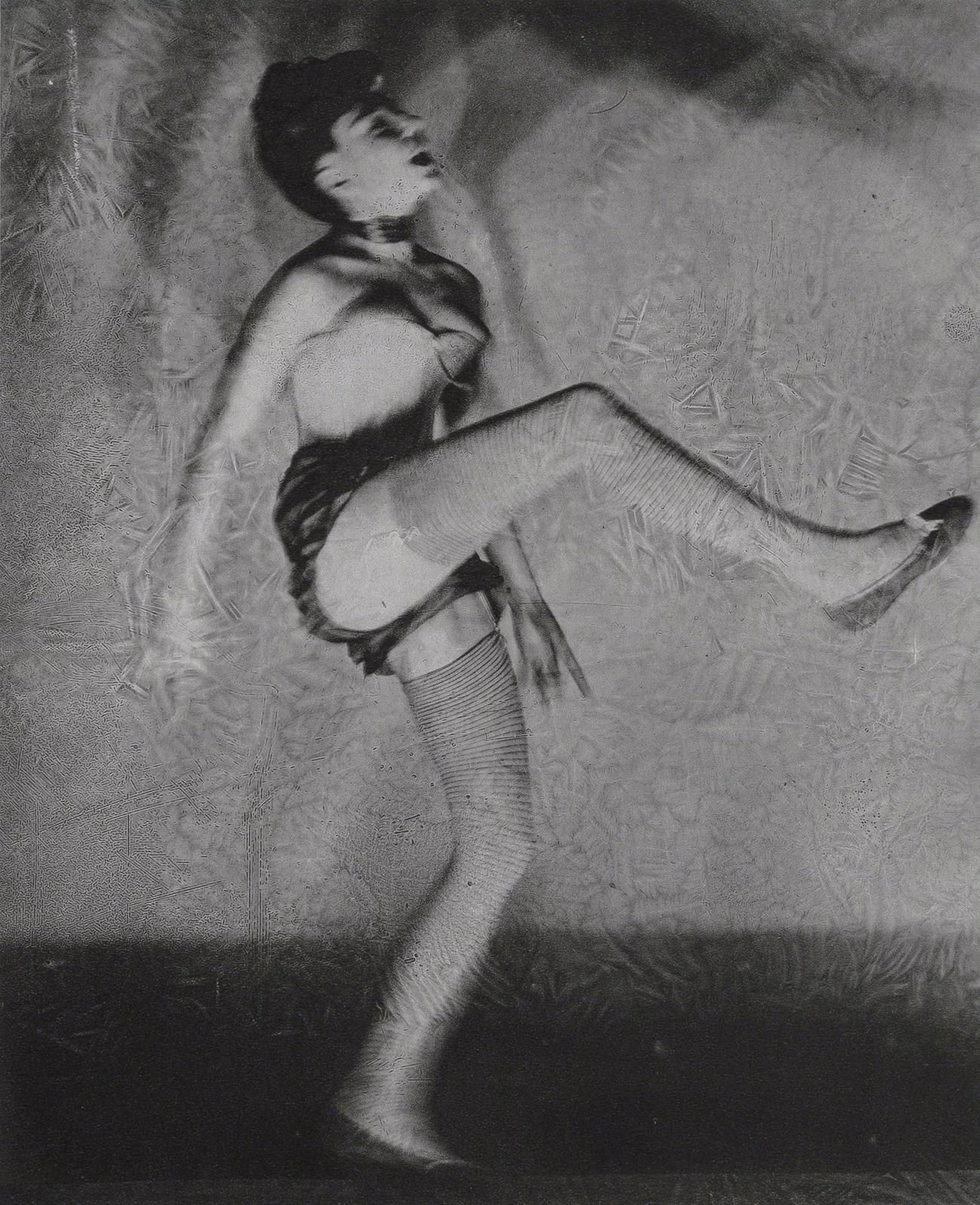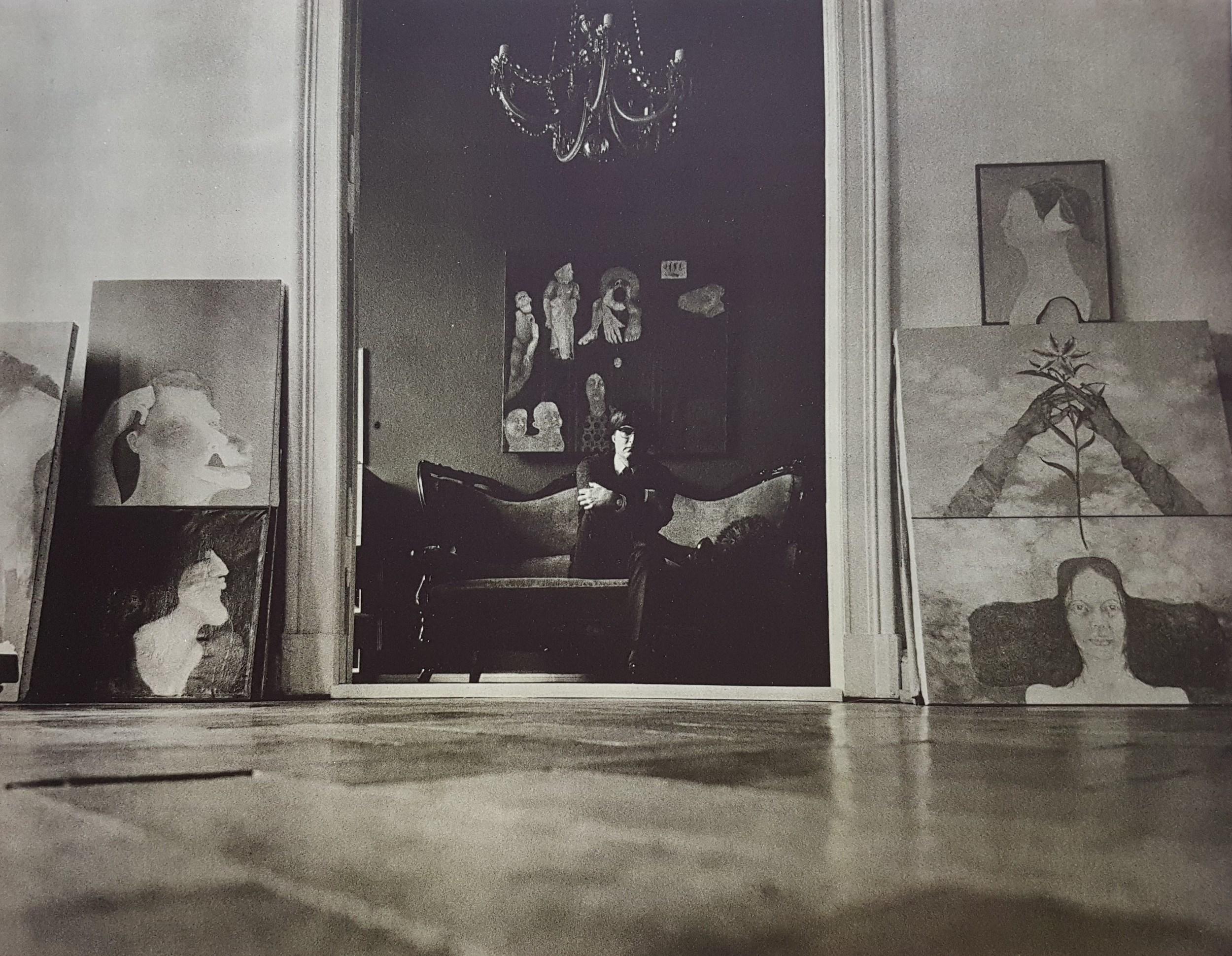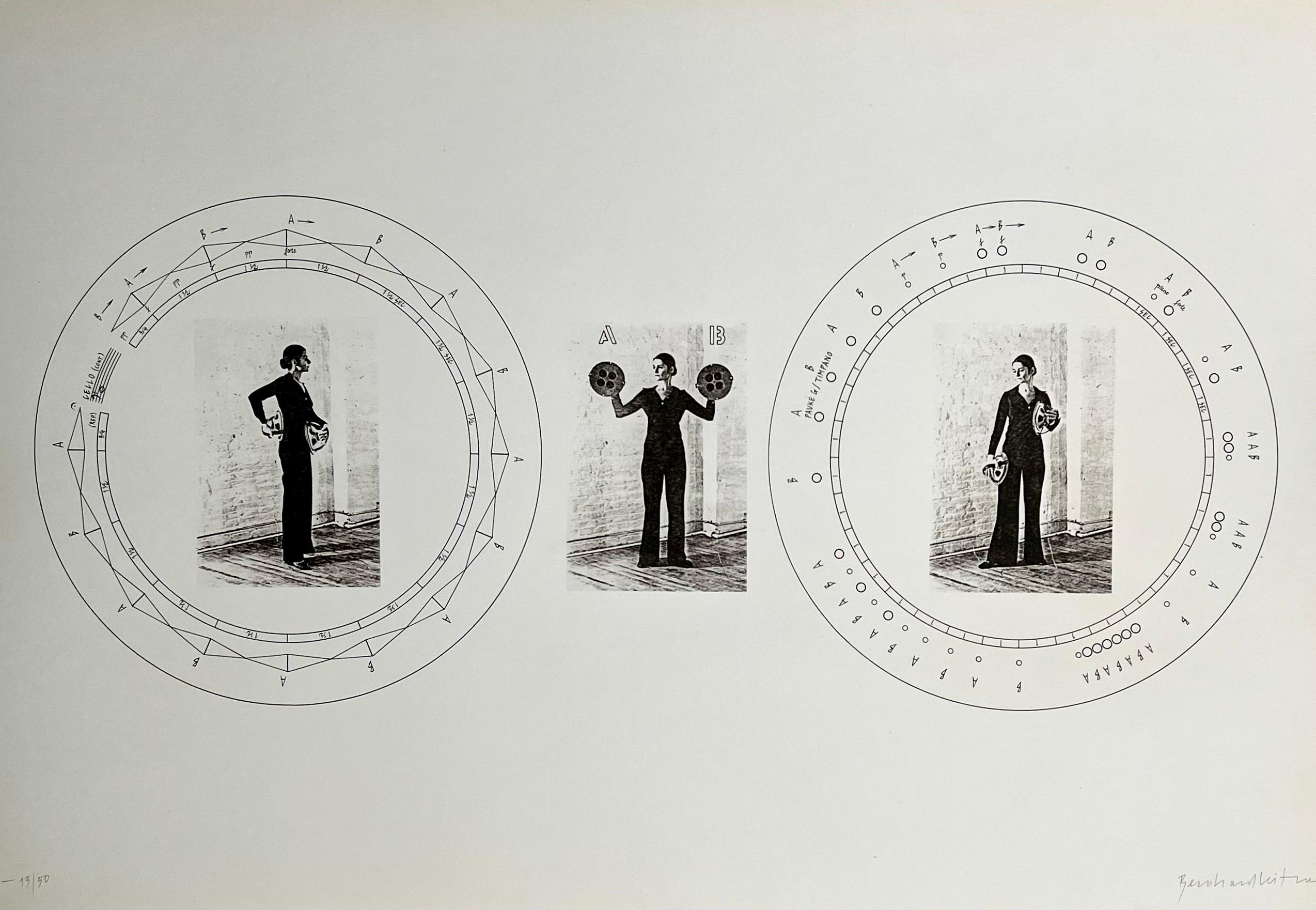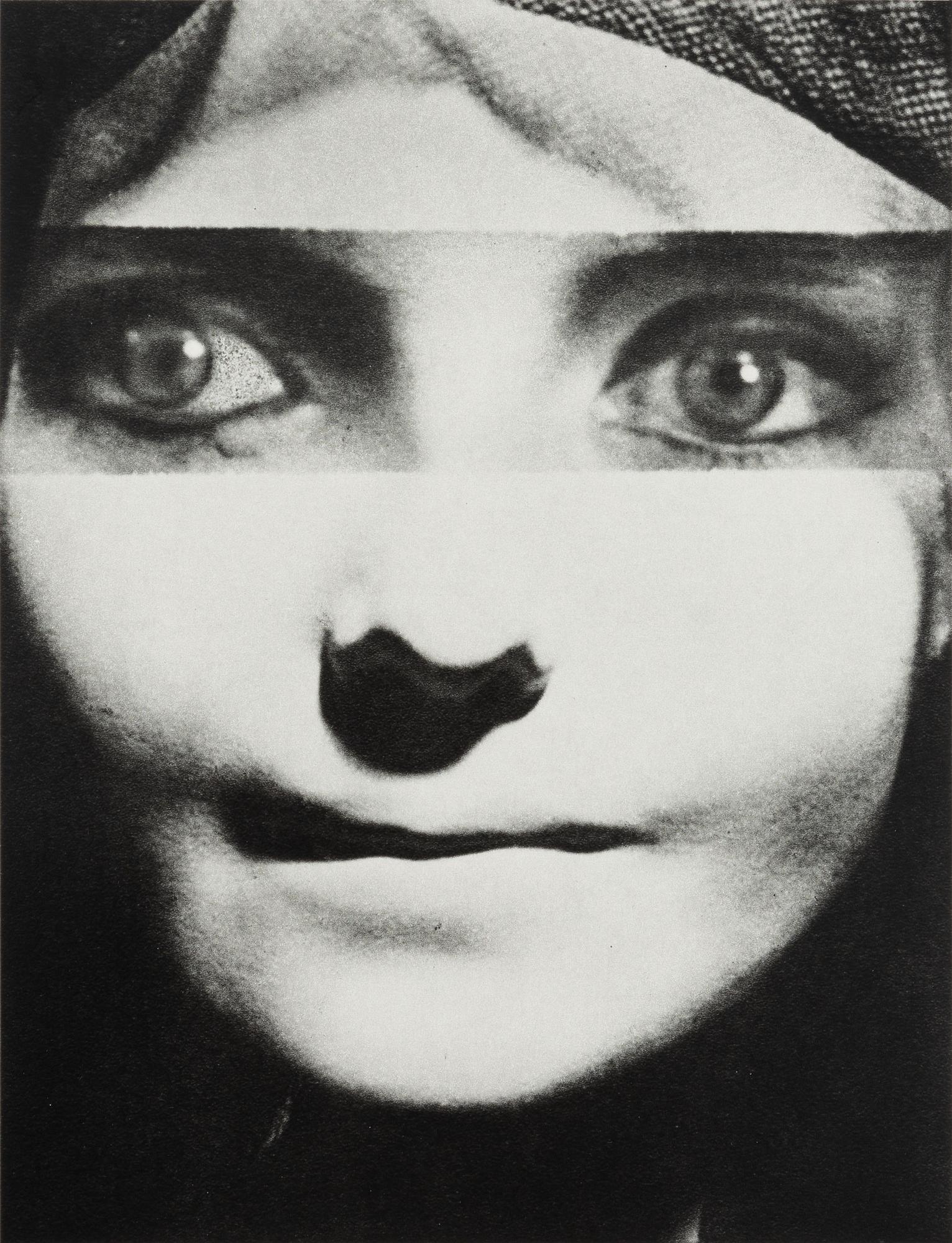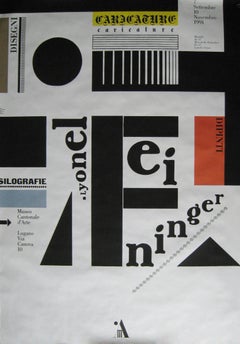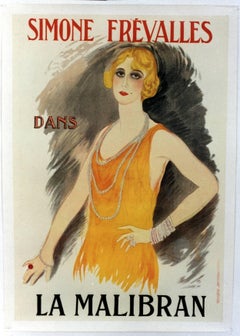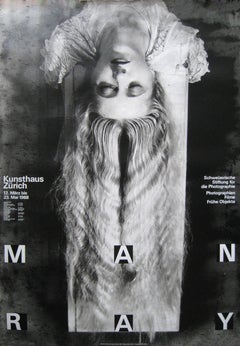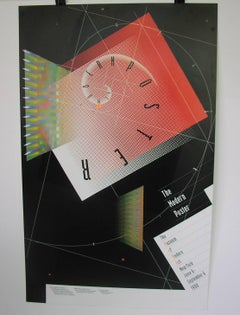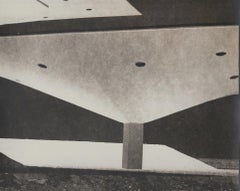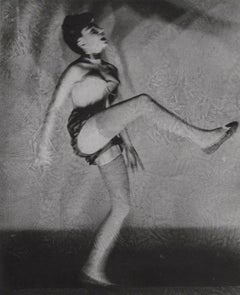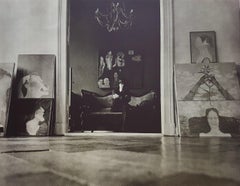Items Similar to Florence Henri
Want more images or videos?
Request additional images or videos from the seller
1 of 4
Bruno MonzuzziFlorence Henri1991
1991
$900
£697.42
€791.43
CA$1,289.93
A$1,416.60
CHF 729.21
MX$16,950.03
NOK 9,284.47
SEK 8,700.93
DKK 5,910.71
About the Item
Ritratti al Bauhaus. Photo-offset poster.
Museo cantonale d'arte Lugano
Year: 1991.
Monguzzi studied in Geneva and London, spent part of his early career in at the studio of Antonio Boggeri, in Milan. The inspiration of the experimental and visually-daring work of the avant garde designers Herbert Bayer, El Lissitsky, Jan Tschichold, Piet Zwart, Paul Schuitema, Ladislav Sutnar, Theo van Doesburg, and Kirill Zdanevich were vital to the development of Monguzzi’s own typographic applications and designs for a dynamic graphic language.
Monguzzi applied ideas about three-dimensional structure and perception as a way to meet the challenges of both creating universal forms of communication and contextualized environments for an international audience.
- Creator:Bruno Monzuzzi (1941, Swiss)
- Creation Year:1991
- Dimensions:Height: 50.25 in (127.64 cm)Width: 35.63 in (90.51 cm)
- Medium:
- Movement & Style:
- Period:
- Condition:
- Gallery Location:New York, NY
- Reference Number:1stDibs: LU29221762963
About the Seller
5.0
Vetted Professional Seller
Every seller passes strict standards for authenticity and reliability
1stDibs seller since 2015
62 sales on 1stDibs
Associations
International Fine Print Dealers Association
- ShippingRetrieving quote...Shipping from: New York, NY
- Return Policy
More From This Seller
View AllOskar Schlemmer/Igor Stravinsky's "Les Noces"
By Bruno Monzuzzi
Located in New York, NY
Oskar Schlemmer/Igor Stravinsky's Les Noces, 1988. Color
Lithograph. 35.5 x 50 inches (90 x 127 cm)
Monguzzi studied in Geneva and London, spent part of his early career in at the studio of Antonio Boggeri, in Milan. The inspiration of the experimental and visually-daring work of the avant garde designers Herbert Bayer, El Lissitsky, Jan Tschichold, Piet Zwart, Paul Schuitema, Ladislav Sutnar...
Category
1980s Abstract Abstract Prints
Materials
Lithograph
Simon Frevalles
By Marcel Vertès
Located in New York, NY
Poster Adverting the Entertainer Simon Frevalles. 1923. Color lithograph. On Linen.
An outstanding twentieth century painter, printmaker and illustrator, Marcel Vertes moved from his native Hungary to Paris during the First World War. The art of Marcel Vertes was at its peak during the vibrant and somewhat wild decade of the 1920’s. Concentrating upon scenes of Paris street life, portrayals of women and depictions of circus and cabaret acts, Vertes left a legacy of original lithographs and drawings that superbly capture the spirit of 1920’s Paris.
Vertès is also responsible for the original murals in the Café Carlyle...
Category
1920s Art Deco Figurative Prints
Materials
Lithograph
Man Ray Exhibition/Kunsthaus. Zurich. 1988. Offset.
By Werner Jeker
Located in New York, NY
Graphic designer, co-founder of Les Ateliers du Nord, Lausanne. Member of the Alliance Graphique Internationale (AGI).
Regular collaboration with an important number of cultural, social and commercial institutions, the Swiss Foundation for Photography in Zurich, the Collection de l’Art Brut, the Musée de l’Elysée, the Museum of fine arts Lausanne, le Museum of Ethnography Geneva (MEG), Geneva (OCG), the Photo gallery FNAC in Paris, Magnum Photos in Paris and Phaidon Press in London for whom he creates posters, the domain in which he achieved celebrity, He was the artistic director of communication for Weimar'99, Cultural Capital of Europe in 1999.
Numerous national and international awards, amongst which the Award for exceptional Use of Photography in Graphic Design awarded by the International Center of Photography, New York, 1988; the First Prize for a new series of Swiss Bank...
Category
1980s Modern Figurative Prints
Materials
Offset
THE MODERN POSTER.
By April Greiman
Located in New York, NY
THE MODERN POSTER. 1988.
38 3/4x24 1/2 inches, 98 1/2x62 1/4 cm.
Condition A. Paper.
Greiman, an early proponent of computer imagery and digital design, became a prominent role model for a new generation of American graphic designers in the digital age. She was able to incorporate her knowledge of European Modernism into Californian ;New Wave style. As Steven Heller explained in Eye Magazine...
Category
1980s 85 New Wave Abstract Prints
Materials
Offset
Gewerbemuseum, Basel/Licht Reklame. 1928.
By Charles Karl Hidenlang
Located in New York, NY
Hindenlang, Charles [Karl]. Gewerbemuseum, Basel/Licht Reklame. 1928.
Color lithograph. Printed by Wasserman, Basel. 35 1/5 x 50 1/4."
Hiddenlang was known primarily as a muralist with interests in painting,
glassware, ceramics, stage and graphic design. Born in Basel and
educated at the city's Gewerbeschule.
The Kunsthalle Basel dedicated to him in 1965 along with Dick and Karl Otto...
Category
1920s Bauhaus Abstract Prints
Materials
Lithograph
Poster designed by Sutnar for the exhibition Sutnar: visual design in action.
Located in New York, NY
Sutnar, Ladislav .Design Poster, 1961. Offset, 24 x18"
Poster designed by Sutnar for the exhibition Sutnar: visual design in action, originated by the Contemporary
Arts Center, Cincinnati, Ohio.
Ladislav Sutnar...
Category
1960s Abstract Abstract Prints
Materials
Offset
You May Also Like
Untitled
By Ida Lansky
Located in Denton, TX
8 x 10 in.
Vintage gelatin silver print by Ida Lansky.
Artist stamp on print verso
Ida G. Lansky was born in 1910 in Toronto, Canada. She pursued many careers in her lifetime including Nursing, Art, and Library Science. In 1928 she moved to New York City and later attended New York University, The Jewish Hospital in Brooklyn, NY and Cornell University. In 1942 she received a B.S. in Public Health Nursing.
Ida Lansky moved to Hawaii in 1945 and married Irving Lansky. She then moved to Norman, Oklahoma and then to Denton, Texas where she studied art and was mother to two children, Ellen and Michele.
From 1954 - 1959 she was in the Visual Art studies program at Texas Women’s University in Denton with an emphasis on photography. She studied under Carlotta Corpron.
1959 marked a peak in her art career when she exhibited her photographs in a group exhibition curated by Henry Holmes Smith...
Category
Late 20th Century Bauhaus Abstract Photography
Materials
Silver Gelatin
Erwin Blumenfeld, Can-can Dancer, New York Electa Editrice, 1981 (after)
By Erwin Blumenfeld
Located in Southampton, NY
This exquisite heliogravure after Erwin Blumenfeld (1897–1969), titled Can-can Dancer, New York, originates from the 1981 folio Erwin Blumenfeld, Electa Editrice Portfolios. Publishe...
Category
1980s Modern Figurative Photography
Materials
Offset
$716 Sale Price
20% Off
Free Shipping
Portrait
By Jean-Emile Laboureur
Located in New York, NY
Jean-Emile Laboureur (1877-1943), Portrait, 1917, engraving, signed in pencil lower left and numbered lower right (28/40). Reference: S. Laboureur 170, third state (of 3), from the e...
Category
1910s Art Deco Portrait Prints
Materials
Engraving
"Reiner Schwarz" (III)
By Reiner Schwarz
Located in Kansas City, MO
Reiner Schwarz
"Reiner Schwarz" (III)
From Portfolio "Portrait #11 - Reiner Schwarz" with Karin Szekessy
Year: 1972
Medium: Phototype (Lichtdruck)
Edition: 100
Size: 26.4 x 20.1 in.
...
Category
1970s Post-Modern Prints and Multiples
Materials
Lithograph
$300 Sale Price
40% Off
Austrian Sound Space Architect Bernhard Leitner Photo Lithograph Hand Signed Art
Located in Surfside, FL
Bernhard Leitner, (Austrian, 1938)
From a portfolio "Sound : Space" "Ton : Raum"
Self published by artist in 1975/1976,
Limited edition of 50
Hand signed in pencil by artist.
Acc...
Category
1970s Modern Abstract Prints
Materials
Screen
Man Ray, Illustration for the Novel, Aurelien, 1980 (after)
By Man Ray
Located in Southampton, NY
This exquisite heliogravure after Man Ray (1890–1976), titled Illustration for the Novel, Aurelien, by Louis Aragon, originates from the 1980 folio Man Ray, Electa Editrice Portfolio...
Category
1980s Surrealist Figurative Photography
Materials
Lithograph
$956 Sale Price
20% Off
Free Shipping
More Ways To Browse
Kim Jong Un
Klimt Embrace
L Jambor
Last Supper Lithograph
Le Joueur De Flute
Lech Poster
Leonda Finke
Leonor Fini Sphinx
Leroy Neiman Artist Proof
Leroy Neiman Cafe
Leroy Neiman Football
Leroy Neiman Frank Sinatra Prints
Leroy Neiman Frank Sinatra
Leroy Neiman Sailing
Lichtenstein Art Critic
Linogravure Picasso
Luis Salazar
M Utrillo
